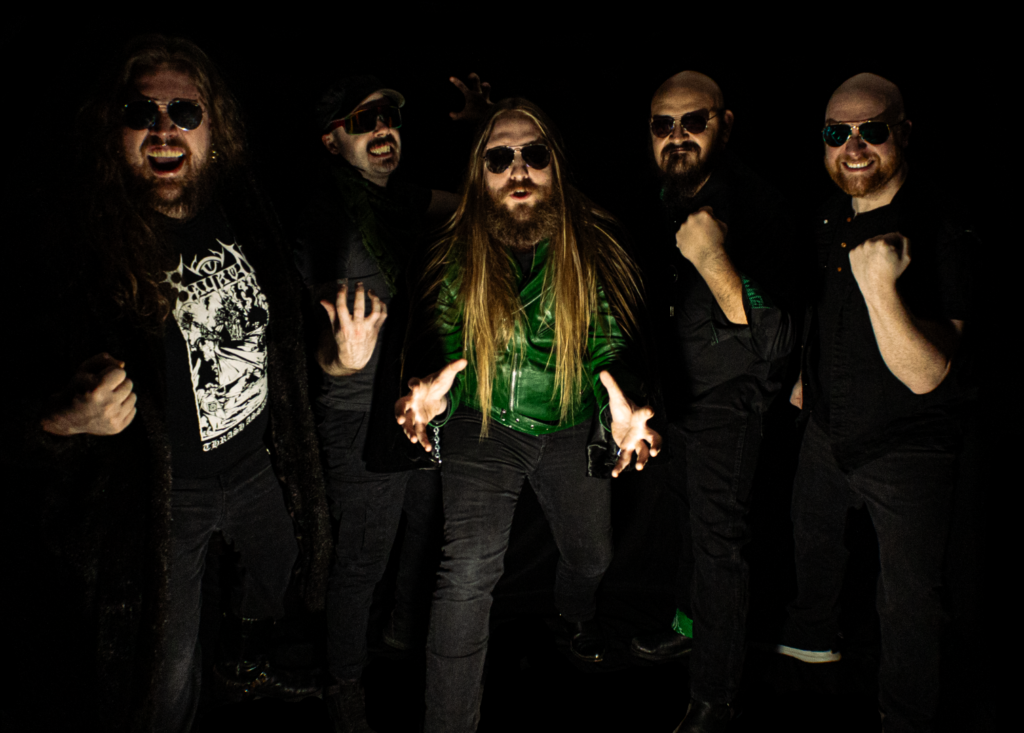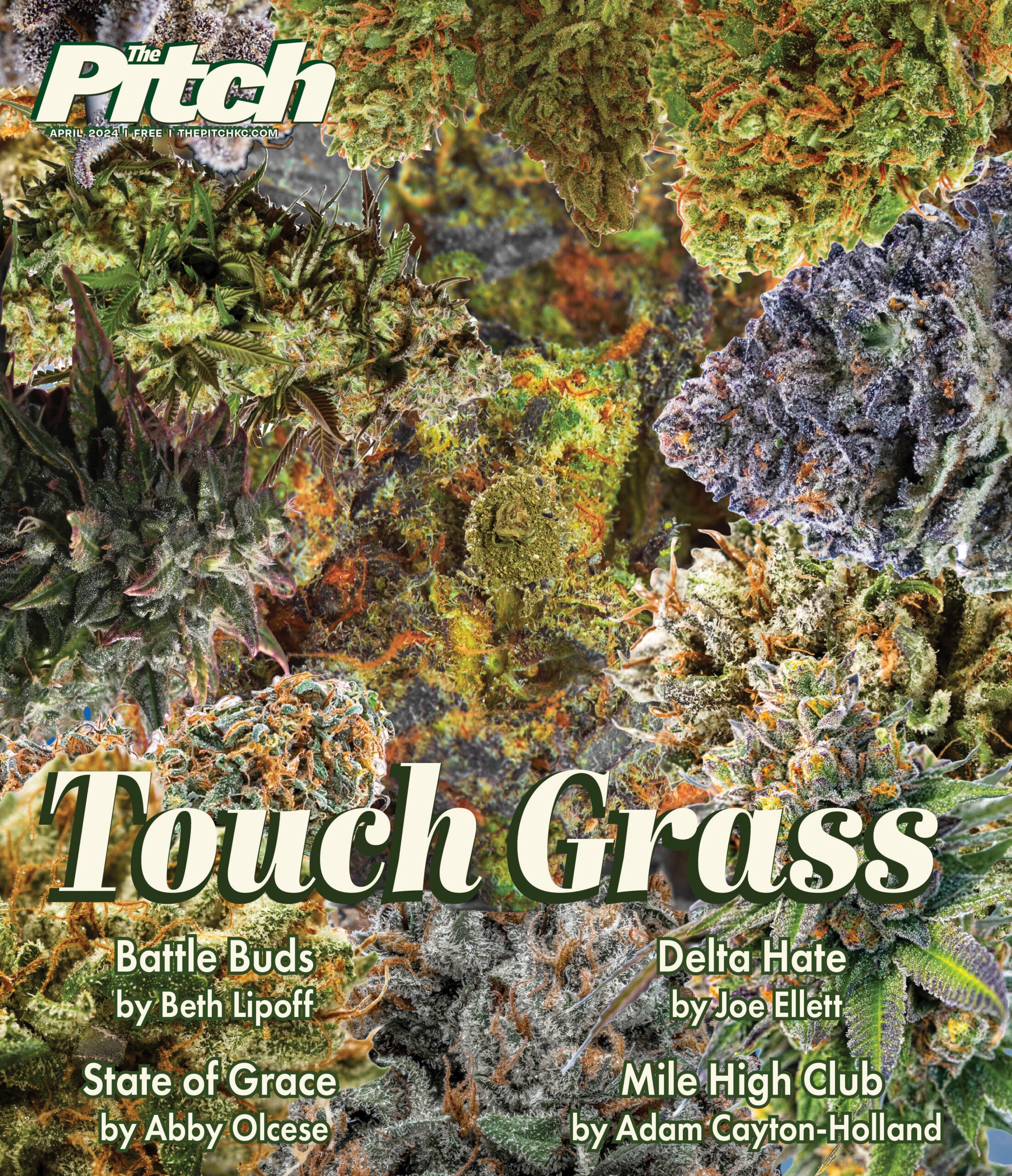The Kills’ Alison Mosshart on her new book, Car Ma and the enduring appeal of Vanishing Point
Musician Alison Mosshart has been rocking faces in the Kills and the Dead Weather for nearly two decades now, and before that, her work in the pop-punk band, Discount, endeared her to a generation of DIY kids all across the country. This Friday, Mosshart releases her first book via Third Man Records. Entitled Car Ma, it’s a collection of writing and art, all related to the automobile and car culture. There’s also an audio companion, Sound Wheel, which repurposes some of the book’s material into spoken word, but there are also audio collages and songs. It’s a heady conflagration of work, but it’s still as rock ‘n’ roll as anything Mosshart has ever done.
I spoke to the musician by phone from L.A. last week about the book, album, and the enduring appeal of a super-charged white 1970 Dodge Challenger R/T 440 Magnum.
 The Pitch: Looking at the end of Car Ma, I see some stuff here that’s from 2003. How long has this been in the works?
The Pitch: Looking at the end of Car Ma, I see some stuff here that’s from 2003. How long has this been in the works?
Alison Mosshart: I never intended to make a book. That’s just all things that I had and from artwork that I’ve done in the past and photographs that I’ve collected and things like that. The concept of doing a book was not until last year. In November 2018, I did a painting show in Los Angeles with my friend Danny Zovatto. It was called “Los Trachas,” and we just locked down in the studio – actually, it was a gallery. We turned it into a studio, painted the show, and then ripped the studio out of it and put the paintings on the wall.
It was all inspired by L.A. There was lots of cars and things. When that show was over, the woman that runs that gallery was like, “Oh, we’re doing this fanzine project. Do you want to make a fanzine? Aa bunch of different artists are doing this thing.” I thought that sounded really great. It was kind of car-themed, or so I was told and so, any excuse, really.
I thought, “That’ll be fun. I haven’t made a fanzine since I was in college,” and so, I sat down to make this car-themed fanzine and I looked up and I was like, 112 pages deep. I was like, “Gosh, I’m gonna have to call her and say, ‘About the fanzine thing? I think that I made a book instead. I’m much more excited about this. I think we should do this instead.’”
We printed up 500 copies of them, sold them all in a couple of days, and it was really exciting It was really cool. I was just that person that showed up at an event for a project that I completely didn’t follow and that was that. That’s how the book came about, but it took me a month to make the book. I wrote the whole thing. There are some pieces of writing in there towards the end that is really old actually, but for the most part, I wrote it all in that time and compiled all the things that I was finding in my studio.
When I read Car Ma, your appreciation for cars goes beyond the aesthetic. Is it an emotional attachment, having grown up like around car culture?
It must be. I really have feelings for cars: they have good energy or they have bad energy or they make me feel super powerful or incredibly protected or incredibly inspired. When I see a car that I think is really cool, there’s something behind it. It’s the owner. It’s the person that has so much care for it–or complete disregard. I also love crashed cars. I love how they look. I love cars that have six different color panels–a total fiasco. It looks like a painting to me.
I love them. I’m always drawn to them and they always wind up in my art. They usually wind up in my songs. They are always swirling around in my head and I love driving so much.
Given the amount of cross-country and international travel you’ve been doing since you were a teenager, has that allowed you to explore your interest in different facets, because you weren’t just limited to what you could see in Florida?
You see everything in Florida. I think the car thing, to me–like you said, it was like the touring. The constant touring and stuff. Cars, to me, symbolize movement–going from one place to another, going on an adventure, going somewhere–but it’s always that journey. The thing I love about touring so much is I love the whole in-between of going from one place to another place. I love being on the highway. I love seeing things pop outside the windows.
Since I was a kid, it’s been really calming to me and I have lots of ideas when I see things moving that fast. It frees up a different part of my brain to think very freely. I think that’s where the love of it’s from and where the love of touring is: from and traveling and constantly moving. I’m not good at being anywhere for very long–terrible, in fact–so this lockdown, it’s been really interesting for me.
Everything you just said–adventure, constantly moving, the open road, seeing things pass by–all those are not only the recurring themes in the book, but are also recurring themes in a film to which you make a lot of reference to, Vanishing Point. That grabbed me so much because that is such an iconic car movie, but also just an iconic car, period.
Oh, yeah. It’s my favorite car. Absolutely, hands down, my favorite car in the world. That movie did a real number on me.
What was your introduction to Vanishing Point?
You know what? I think it was a Primal Scream song. Isn’t that crazy? I think that’s how I found out about it because I was living in England when I first saw it. I didn’t see it when it came out. I didn’t see it as a kid. I ran into it in my early 20s and it immediately just became my favorite film in the world. It’s just one of those ones where I’m just happy if it’s on. I love how it sounds. I love the dialogue. I love everything about it. I love how it looks: every single frame is beautiful.
It’s just that there’s just the constant forward motion and that motion is a constant state of possibility. You don’t know what’s going to happen. Just in general, this whole moving thing, which is I think why I like it so much. You’re not stuck.
“Keith and Christine Walk into a Bar”–I love the fact that I knew who Barry Newman was and Richard Prince was a name that was at the back of my mind, although I had to Google it because it was rattling back there, and I had totally forgotten about the piece he did.
He’s done so much car stuff–like, crazy cool car stuff. Right before I started making that book, I was in New York and I met Richard Prince for the first time. I went to his studio and he showed me all these paintings, but also car parts and stuff–things that he’d had, like sculptural pieces. It was like my dream – truly, the art version of my dreams. He and I started talking about Vanishing Point and cars. We just didn’t shut the fuck up for ages about cars, and we’re sending each other pictures of cars, and he’s the biggest car person on earth. It’s really cool because he’s the ultimate at combining cars and art. I’d like to drive every one of his sculptures, if possible.
What’s crazy about Vanishing Point is that it is a rock and roll movie in execution but not necessarily in terms of sound. As far as the music goes, it’s very folky.
Yeah, it’s kind of got a more California vibe, doesn’t it? It’s definitely folky, but there are such good things on that soundtrack. Aside from some of those songs that you’re speaking of, that soundtrack’s really good. I just love Super Soul. I mean, I could just listen to that guy talking all day, forever.
To that end, it seems so perfect that you include this super-condensed version of the Vanishing Point script in Car Ma.
I thought I probably am not allowed to reprint this, but I’m gonna do it anyway because it started off as an art piece, not a book, and then I thought, “Okay, well I’m gonna do it but I’m gonna make it so it’s basically impossible to read.” Your eyes just have to run around, landing on things. You can’t really hit it in order – you just got to suddenly fall on two words, and it’s really fun to do it. I kind of smashed it all down. It’s interesting because there’s hardly any dialogue and, even if you’re reading that, you don’t know what the hell’s happening: it’s a radio voice, and then some background things, and then a cop over here, and it’s like, if you’re not watching it, it’s pretty all over the place.
 The audio version of Car Ma–Sound Wheel–my favorite parts of it are the ancient cassette recording. There’s something about the tenor and timbre of how a voice recorded to cassette sounds.
The audio version of Car Ma–Sound Wheel–my favorite parts of it are the ancient cassette recording. There’s something about the tenor and timbre of how a voice recorded to cassette sounds.
That’s so great because it’s always slightly wobbly. It’s never totally in perfect time, especially if your batteries are dying. It just gets better and better. There are lots of interludes on [Sound Wheel] that I use a lot of little tiny bitty pieces, and so much of that, I used to when I was a kid—13 or 14, and through college.
I would do this all the time: I had this weird, almost like a spy phone weird thing that you put on your landline phone with a tape recorder. You could record your conversations, and I used to do it all the time. Of course, I just have stacks of these conversations with my friends, with my grandma, with my parents, my brother. I never listened back to them at the time, but finding them in my studio when I was making this record was the coolest thing in the world.
It was the coolest thing to hear my grandmother’s voice. She’s been passed for like a long time–15 years or something. Hearing her long conversations–just endless, endless talking, for hours at a time–and hearing my high school friends talking on the other end of the line and all that stuff, was just so, so damn cool. I used a lot of those things because there were always bits and conversations that were actually all relating back.
When you see these old pictures in [Car Ma], some of them were taken when I was in junior high or younger. It all feels like it follows a thread–of course, just probably only to me–but in context, that’s what I was going for.
Sound Wheel is your first release that has just your name on it: it’s not you as part of a band or guesting on someone else’s song. What’s the sense of ownership to have something that just says Alison Mosshart on it?
I don’t know yet. I haven’t even thought about it because it feels like such an art piece. It feels, to me, very similar as to when I do a painting show or something. It’s a completely different art form. It’s not an album of music, I haven’t really put it into the context like you’re saying. I suppose I think of it more like the art side of what I do – the visual art side. That record is–I don’t even know what that record is. You can call it spoken word, because it’s got passages from the book, but it’s a weird sonic sculpture. I don’t think it’s following any of the normal standards of this spoken word thing
I think that what makes Sound Wheel worth listening to is the idea that this album, this collection of pieces–however you want to look at it–can stand on its own, or it can stand as the audiobook version of Car Ma, or it can stand as like a companion piece. I definitely got a lot out of listening to it while I was looking at and reading through the book.
Oh, that’s cool. I haven’t tried that yet it’, but it has everything. You can look at them as two separate pieces or you can look at them as two halves of a whole or complementary.
Was it freeing to be able to record without constraints?
It was so freeing. It was so fun. It was like playing pretend every day because I didn’t have an idea for how I wanted it to be. I would just spend hours and hours a day making up voices and finding sound effects and layering things. It kind of hearkened back to what was so fun about it when I first met Jamie [Hince, the Kills] and Jamie gave me a four-track cassette recorder to take away on the road when I was in my first band.
He was like, “You should play with this. I think you’ll make some really cool things.” I’d never used one before and that’s kind of what I ended up doing. There was a lot of talking backwards, and radio cuts, and if someone was doing soundcheck, I’d come steal some drum beats. I would just smash all these things together and it just sounded completely insane and I would bring these things back to Jamie like, “Look what I made! It’s a present!” He’d be like, “What the hell is this?” A few of those things ended up on the Kills’ first record as interludes between tracks. We still use it live: it’ll be playing on the backing track in between things.
The freedom of doing that, where you’re just like, “You can do anything! I don’t need to go into a studio! I don’t need to work with anyone else on it–I can just get lost in it,” and not put the microscope on it too much, really reminded me of being 20. It was really fun when I just didn’t overthink things at all and I had nothing to lose, so it was nice to go back into that place.
Certainly, releasing this record is not me saying, “I’m going off on a solo mission and this is what my new music is gonna sound,” so if anybody for one minute thinks that’s the case, that’s hilarious. It was just, sometimes, you just do things because they’re really fun to do and that’s what happened with this.
Normally, I would imagine that you would be going around doing readings and things like that, so how are you celebrating the book’s release?
I’ve been making little films from the little sound bites or from the little sections. I think I’d just made my eighth or ninth film the other day, so it’s been really fun getting into that. When I put that out, back at the beginning of quarantine, I couldn’t go and make a music video with anybody and I needed one and so I just thought, “Fuck it: I’m going to figure out how to do this and I’m going to film it in my house. I’m going to make it and I’m going to teach myself this editing shit and just do it.” Of course, it’s the most perfect quarantine hobby to get because then, I just couldn’t stop making films and I’ve been doing that this whole time.
The one thing that normalized me, too–I was in Nashville for four months and finally, at one point, I was like, “You know what? I just gotta go,” so I decided to drive across the country to L.A. and film the whole thing, and stay in weird motels, and clean them with Clorox wipes like a maniac, and do all of that. It was really just me, by myself. I drove across the country and it was the most beautiful–it was just absolutely affirming. Even to see the country right now, in the state that it’s in.
Alison Mosshart’s book of art and poetry, Car Ma, and the companion audio release, Sound Wheel, are out Friday, August 7, from Third Man Records. You can order both from the Third Man store.





